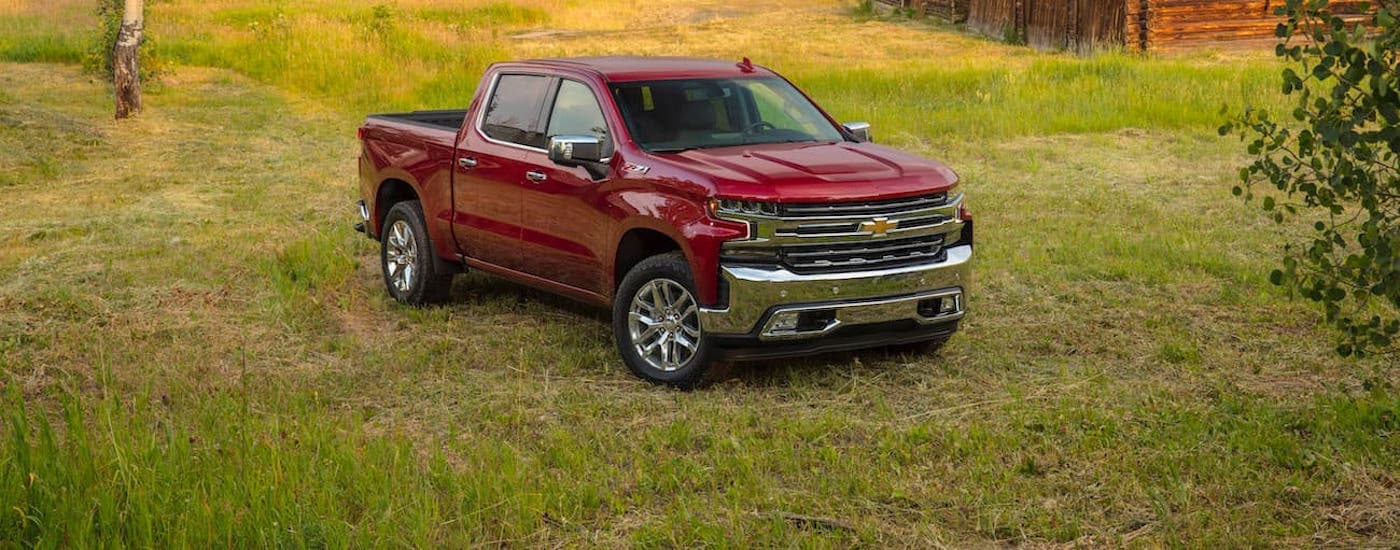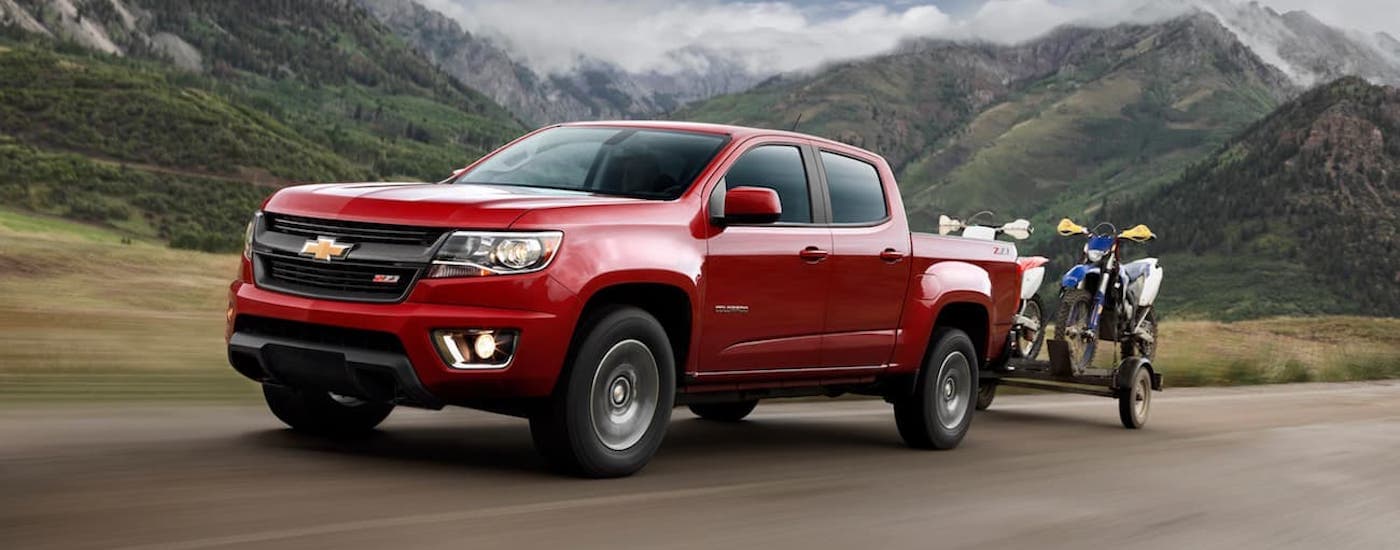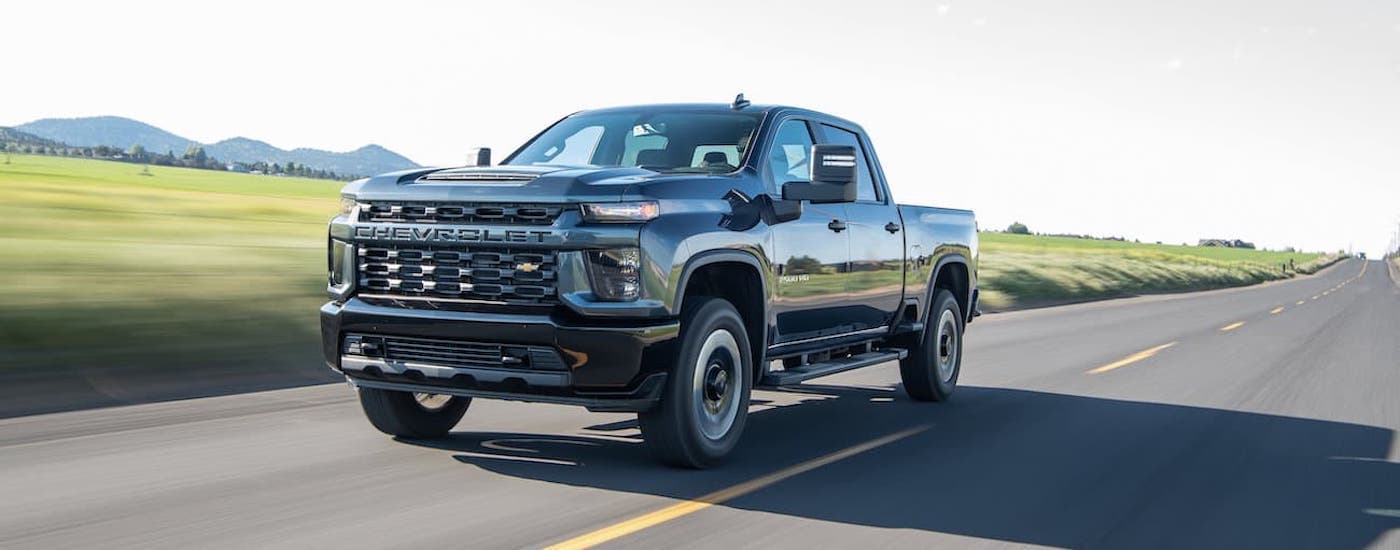Truck Buyers Guide to Size: Compact to Heavy Duty
Perhaps the search for a used truck for sale has left you feeling a bit overwhelmed. Shopping for a pickup truck can often be more complicated than shopping for an average car. You need to consider several factors, the most important of which is your pickup's size. The different truck sizes are compact, midsize, full-size, and heavy duty. The size of your pickup depends on what you plan to do with it. In this article, we’ll explain the four sizes and their capabilities, while also giving you some market examples so you have a decent picture in your head of what we’re talking about. Let’s begin.
Size #1: Compact
Compact, or mini-trucks, were introduced to the United States by Japan in the 1960s with the arrival of the Datsun 1000. This first mini-truck was powered by a 1000cc (hence the name) 4-cylinder engine, which only produced 37 hp. Thank goodness things have improved since then.
During the gas crisis of the 1970s, hulking American V8’s steadily saw themselves fall out of favor for the more fuel-efficient trucks Japan was pumping out, like the aptly named Toyota Pickup and the Mazda B-Series. American manufacturers caught on and eventually released their own mini-trucks, most notably the Chevrolet Luv and Ford Courier.
Once the gas was flowing and cheap again, the compact truck began to vanish steadily. Larger trucks were back in favor, so the little guy got pushed aside.
Compact trucks are famous for their small beds, moderate engines, and superior fuel economy. They were designed with the weekender and the commuter in mind, who could use a pickup truck for its most basic purposes without sacrificing garage space or fuel economy. The age of the compact truck was truly the 60s and 70s, but you can still find some more recent examples on the used market, the chief of which is the Chevrolet S10.
In production from 1982 to 2004, The second generation S10 (1994-2004) is the model you’re most likely to find. It’s powered by a 4.3L V6, and many come with 5-speed manual transmissions. Hp is only 180, but that shouldn’t be a problem if you’re only using it for light purposes.
The compact truck is actually making a bit of a comeback with the likes of the new Ford Maverick and Hyundai Santa Cruz. Obviously, technology has improved to make these newer trucks more capable, but with the cost of gas skyrocketing and the demand for smaller trucks intensifying again, don’t be surprised if you see more manufacturers following suit.
Size #2: Midsize
The midsize pickup was born from the ashes of the compact truck, and often mistaken for one another. It’s easy to see why, as the early midsizes, like the first-gen Ford Ranger, were so close in size to their compact brethren that they were virtually indistinguishable. If the ride height had not improved and the facia had not been changed, you wouldn’t have noticed any differences.
The midsize pickup truck has proven itself to be the market sweet spot. They offer the size, comfort, and fuel economy, with the average being about 23 mpg (miles per gallon) across the compact segment while also making room for more power and capability of a full-size.
Most midsize trucks will come with extended cabs or four-door models. Don’t expect a large bed box on these, especially if you’re going for a four-door. The universal bed size for a midsize is 5ft, with 6ft only being an option if you choose an extended cab. The only notable exception to this rule is the ever configurable Toyota Tacoma, in which you have the option of a four-door long bed.
Today, midsize trucks are viewed more as recreational vehicles than work trucks. Older buyers will remember the original Rangers as the capable commuter trucks that could also handle several hundred lbs of payload. That capability is not gone; it just comes in a more comfortable and tech-user-friendly package.
Midsizes come standard as 2WD, with 4WD being a popular added option. Many of these trucks have been kitted for off-roading to add to their adventurous appeal. Examples of midsize pickups include Toyota Tacoma, Chevrolet Colorado (which replaced the S10 we talked about earlier), GMC Canyon, Nissan Frontier, Ford Ranger, and Honda Ridgeline.
As you can see, this market segment is flooded, And it’s easy to see why. Midsize pickups are comfortable yet capable. Tough, yet civilized. They can go from the parking lot at work to the hardware store to the outer banks without any fuss. If that lifestyle appeals to you, then you may want to consider one.
Size #3: Full-size/Half-ton
Now we get to the big boys: the full-size, or half-ton, trucks. It’s in this class where we really start to focus on payload and towing capacity. While they can still be used as recreational vehicles, most full-size trucks sold in the United States will be used specifically as work vehicles, which is why the half-ton classification is so important here.
The half-ton marker is an indicator of the truck's payload capacity, which is 1,000 lbs and above in order to qualify. Now, we all know the brands and models that dominate this segment. The Big Three are Ford F-150, Chevrolet Silverado 1500, and Ram 1500. As you can see in their names, each of these three trucks is rated to haul at least 1,500lbs of payload. Others in this segment include the Toyota Tundra, GMC Sierra, and Nissan Titan.
One thing to note about full-size trucks is their ability to be configured. In order for a truck to sell in today's market, it has to be able to haul your family, your tools, and your toys. So, across the class, full-size trucks come with the availability of four-door crew cabs. The only downside to this is a loss in bed size. Virtually no full-size truck with four doors has a bed size over 5.5’. Now, if it's the capacity you’re looking for, you’ll want to go for either an extended cab or even just a regular one. Most buyers who use their trucks for work will go with these options. Bed sizes on these trims are typically 6.5’ or the traditional 8’.
This is the most popular truck size in America, partly due to its payload capability and ability to haul several thousand pounds. They’re the trucks that have been with us the longest. Think about what your grandfather or local farmer drove. Chances are, it was a full-size pickup truck.





